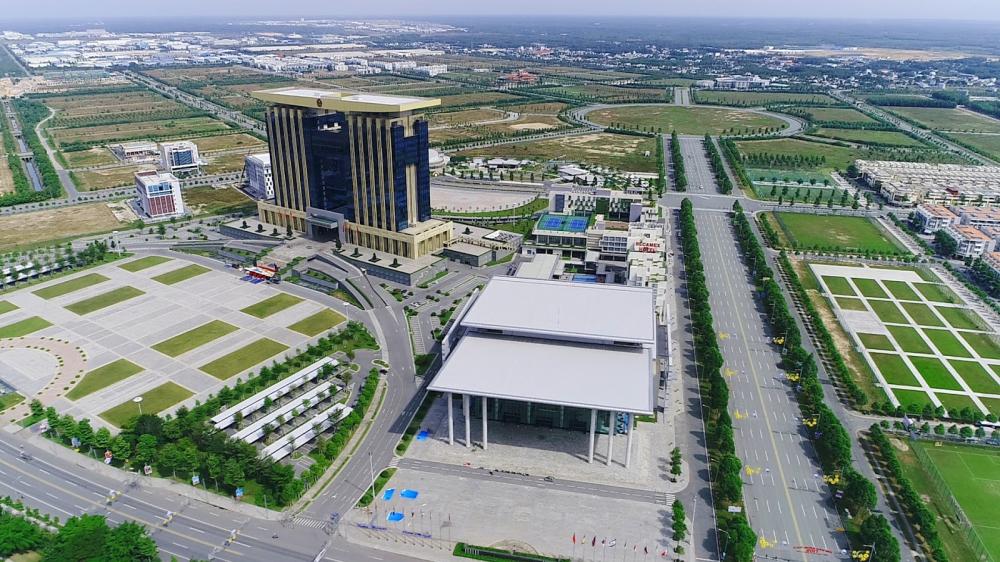
Vietnam’s economy
According to Colliers International's latest market report, the GDP of Vietnam increased by 6.79% in 1Q2019, which was lower than in the first quarter of 2018, but higher than that of the period from 2011 to 2017. The industry and construction sector increased by 8.63%, and the service sector grew by 6.5%. In terms of economic structure, the former accounted for 35.25%, and the latter contributed 44.04%, respectively. These factors show that Vietnam’s economy is strongly embracing Industry 4.0. In terms of GDP use in 1Q2019, final consumption increased by 7.09%, accumulated assets grew by 6.2%, export or goods and services increased by 6.81%, and import of goods and services rose by 8.7%.
In 1Q2019, there were 785 newly licensed projects with the total registered capital of USD 3.8 billion, which were 27% and 80.1% over the same indicators in the first quarter of 2018, respectively. Also taking into account the amount of adjusted investment capital, total newly registered and adjusted capital in 1Q2019 was approximately USD 5.2 billion, 30.9% more than the that of 1Q2018.
Industrial performance
Among the Southern provinces, Ho Chi Minh City leads the market in industrial rent, at approximately 123.8 USD/sqm/term for industrial land lease, and around 4.3 USD/sqm/month for factory lease.
The average occupancy rate among industrial parks in Hanoi reached an estimated 87%. Bac Tu Liem and Thang Long districts have reached 100% occupancy, and newcomers Phu Xuyen and Thach That districts have also seen their occupancy increased to over 60%.
Supply
At the end of 2018, there were 18 industrial parks in Ho Chi Minh City, providing approximately 3,700 ha of leasable industrial land, of which, only roughly 1,050 ha is available. The supply of leasable industrial land is being taken up at a high pace due to a lack of new supply in Ho Chi Minh City.
In 1Q2019 there were no additional supply in the industrial market in Hanoi. As of March 2019, the total supply of industrial land in Hanoi was approximately 2,700 ha, located mainly in Chuong My, Thach That, and Dong Anh districts, which account for almost 70% of the industrial supply in Hanoi.
Demand
In HCMC, the current tenant mix of most industrial parks at present are mostly those who have set up their operation in the existing parks from many years ago. Thus, they benefited from much lower rent rates and also smaller increases in rates. However, due to the limited supply of industrial land in the city which has driven costs upward at a high rate, companies are shifting their focus to surrounding areas to find better priced alternatives.
With Hanoi receiving USD 5 billion in FDI in 2018, the industrial sector has proved to be a strong performer. In particular, the electronics, manufacturing, and processing sectors displayed the highest growth rates. They are the main drivers of demand for industrial land in Hanoi.
Outlook
Moving forward, the industrial supply in Ho Chi Minh City will increase by 613 ha upon the completion of phase two of Saigon High-tech Park. Announcements have also been made regarding the development of two additional expansions, namely phase three of Hiep Phuoc Industrial Park, and the expansion of Tay Bac Cu Chi Industrial Park. However, these parks are still awaiting confirmation of their completion dates.
It has been announced that the total industrial area in Hanoi will increase by roughly 6,100 ha by 2022. It is yet unclear whether any new industrial park or industrial zone will come online in 2019. However, it is likely that the western and northwestern areas of Hanoi will be major industrial destination in the near future.

















